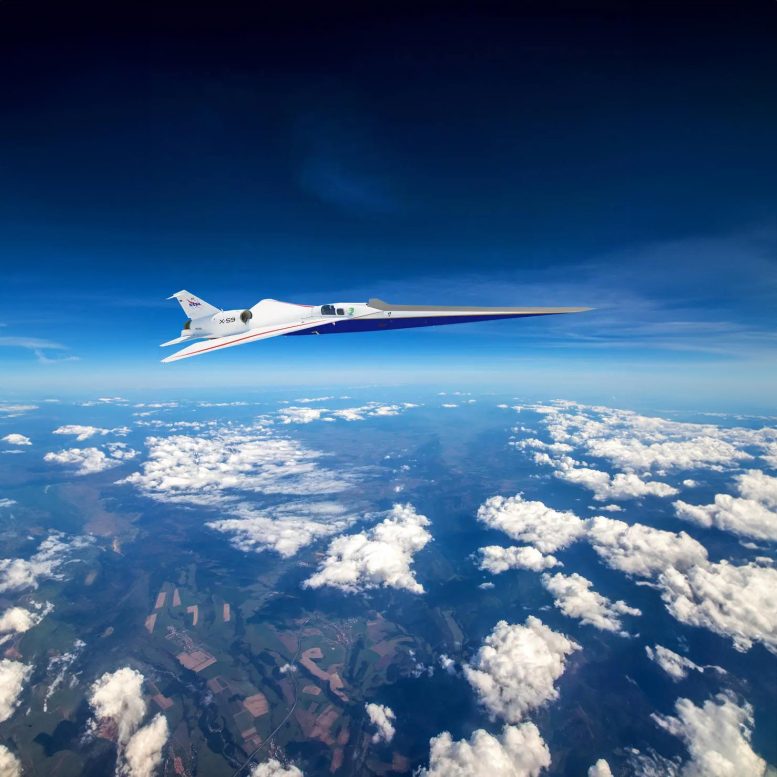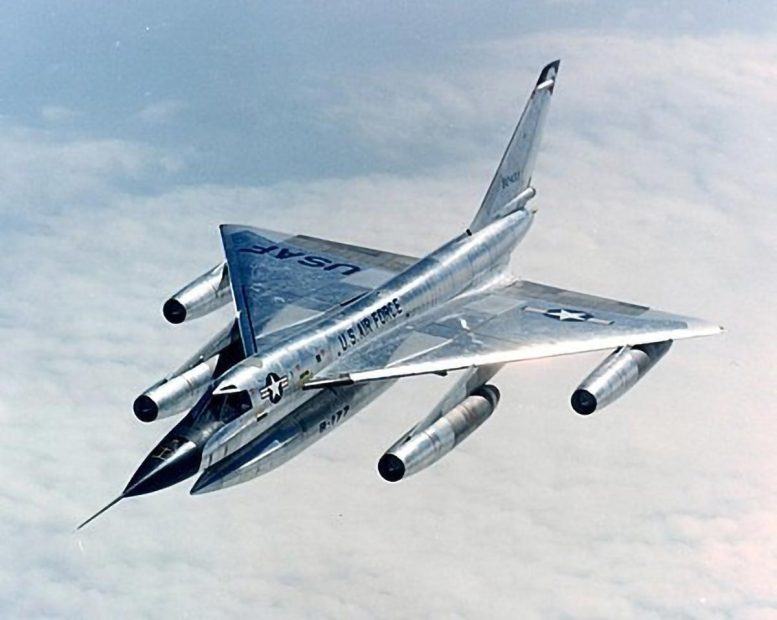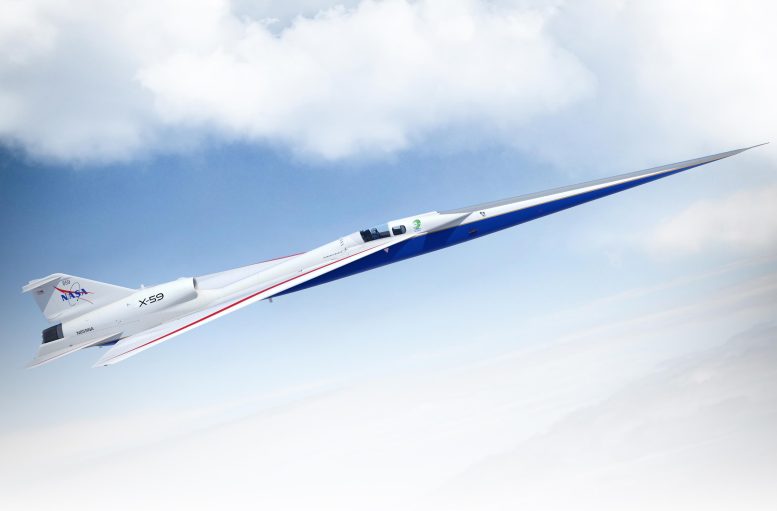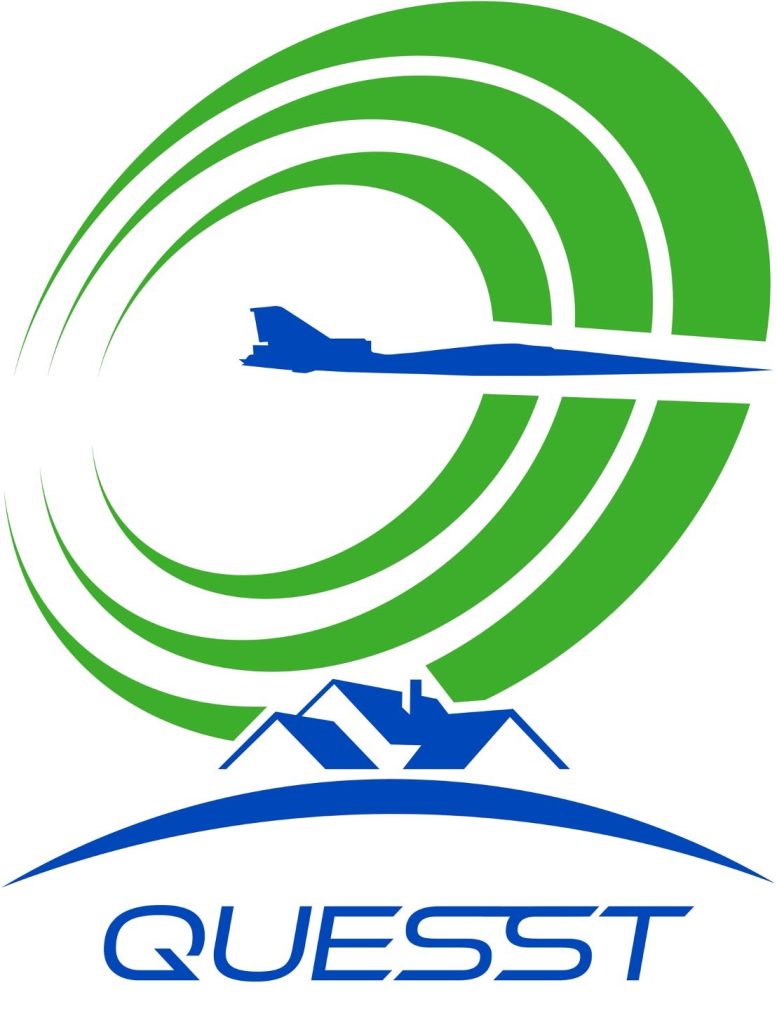
NASA’s X-59, seen in this illustration, is designed to fly faster than sound but generate quieter sonic “thumps” rather than booms. To test the public’s perception of this noise, part of the Quesst plan includes flying the X-59 over several communities to survey how people react. Credit: Lockheed Martin
Officially put into effect on April 27, 1973, the ban’s introduction was strongly influenced by public opinion surveys in cities where supersonic military jets were flown overhead. Many folks said they didn’t like what they heard or the way their windows rattled because of the sonic booms.
Although some research suggested ways to soften the impact of sonic booms, aeronautical technology during the 1960s and early 1970s wasn’t sophisticated enough to fully solve the problem in time to prevent the rule from being enacted.
But today, NASA is working on a solution.
“It’s a rule that many people today aren’t aware of, yet it’s at the heart of what our Quesst mission with its quiet supersonic X-59 airplane is all about,” said Peter Coen, NASA’s Quesst mission integration manager.

An Air Force B-58 Hustler supersonic bomber like this one was one of many military jets used during the 1960s to generate sonic booms over U.S. cities to see how the public would react to the sound. The research helped lead to a ban on civilian faster-than-sound flight over land beginning in 1973. Credit: Air Force
NASA’s X-59 is designed to fly faster than sound, but with drastically reduced noise – people below would hear sonic “thumps” rather than booms, if they hear anything at all. To test the public’s perception of this noise, part of the Quesst plan includes flying the X-59 over several communities to survey how people react.
NASA will deliver the results to U.S. and international regulators, who will consider new rules that would lift the ban that has been in place for so long. The goal is for a regulatory shift that focuses on the sound an aircraft creates, instead of a speed limit.
“We’re definitely ready to write a new chapter in the history of supersonic flight, making air travel over land twice as fast, but in a way that is safe, sustainable, and so much quieter than before.”
— Peter Coen, NASA’s Quesst Mission Integration Manager
Boom Boom
The origins of the federal ban on supersonic flight go back to 1947, the first time the rocket-powered XS-1 airplane broke the sound barrier and initiated the heroic era of faster-than-sound research.
At first, it was all about learning to fly X-planes faster and higher. No one gave the sonic booms a second thought, mostly because few people lived where the research was taking place.
Despite early interest in what was then a mysterious phenomenon created as an airplane flies faster than the speed of sound and generate atmospheric shock waves we hear as sonic booms, there were few tools and only limited data available to help understand what was happening.
But as the Air Force and Navy began to deploy large numbers of supersonic jets at bases around the nation, interest in sonic booms quickly grew as more of the public became exposed to the often-alarming noise.

NASA will deliver results to U.S. and international regulators, who will consider new rules that would lift the civilian supersonic flight ban that has been in place for so long. Credit: RAF Mildenhall, United Kingdom
Beginning in 1956 and continuing well into the 1960s, the Air Force, Navy, NASA, and the Federal Aviation Administration (FAA) employed resources to study how sonic booms formed under various conditions, what their effects might be on buildings, and how the public would react in different locations.
Through those years, using many types of supersonic jets, residents of Atlanta, Chicago, Dallas, Denver, Los Angeles, and Minneapolis, among others, all were exposed to sonic booms from military fighter jets and bombers flying overhead at high altitudes.
Two concentrated studies – one over St. Louis in 1961 and the other over Oklahoma City in 1964 (dubbed Bongo and Bongo II, respectively) – left no doubt the public was not fully supportive of routine sonic booms coming down from above.
The tests generated national news and fueled strongly negative sentiment about supersonic flight.

NASA’s Quesst mission graphic displays stylized supersonic shockwaves encircling the research aircraft, above a community of homes. The imagery highlights the ground-breaking research that will be conducted across several U.S. cities during this mission. Credit: NASA / Maria Werries
The Supersonic Transport
As this work to better understand and predict sonic boom formation continued and gave rise to the first notions of how to minimize a sonic boom by changing an airplane’s shape, the U.S. government began to work with industry in an attempt to develop the Supersonic Transport, or SST.
The announcement of the SST by President John F. Kennedy in June 1963 raised interest in studying and mitigating sonic booms from a technical standpoint, turning the research into a top priority.
The SST project aimed to produce the prototype for a new commercial supersonic airliner, capable of carrying as many as 300 passengers anywhere in the world at speeds as great as three times the speed of sound.
(Note that the speed of sound varies depending on things like temperature and altitude. At sea level and 68 degrees SciTechDaily